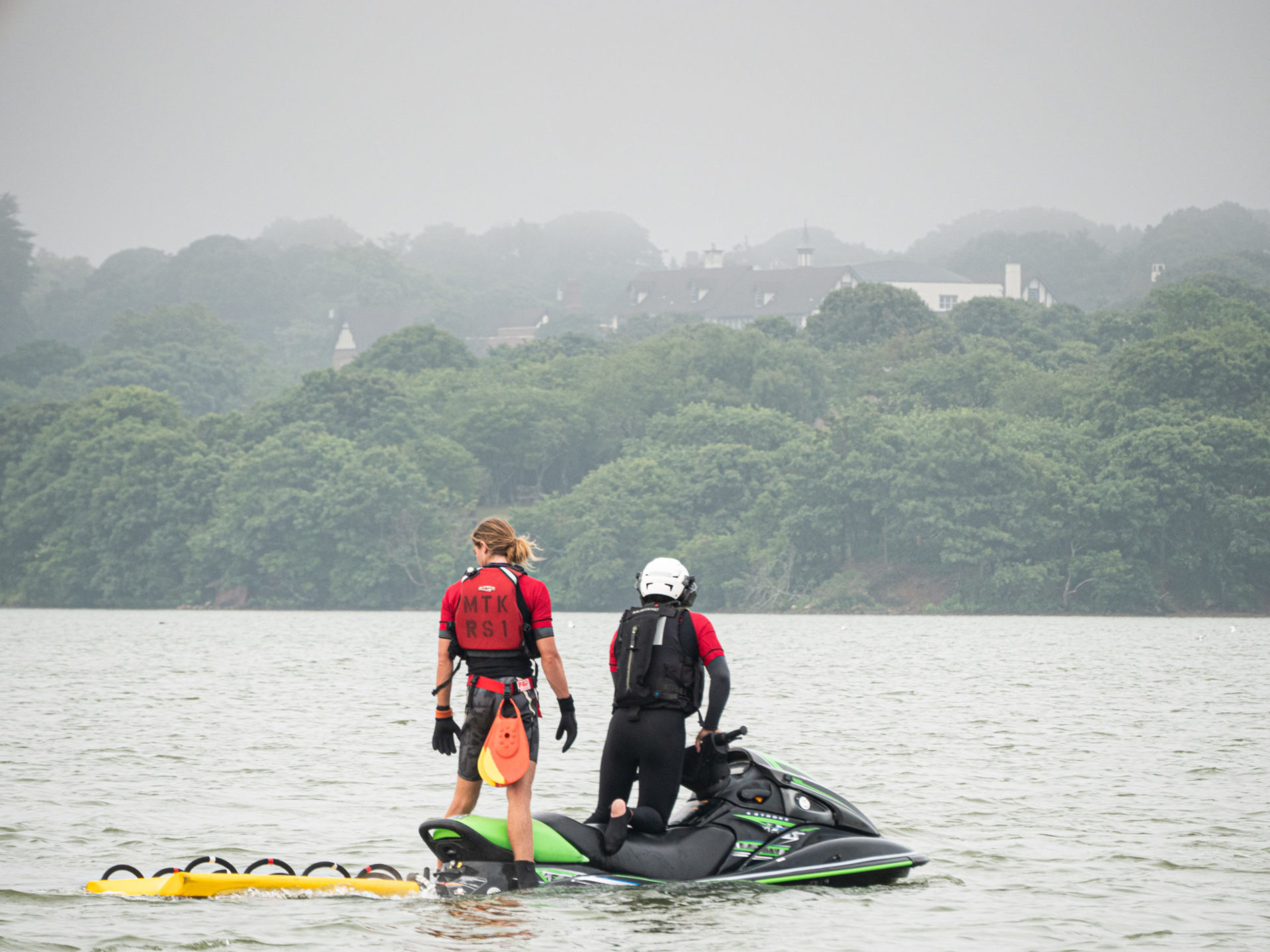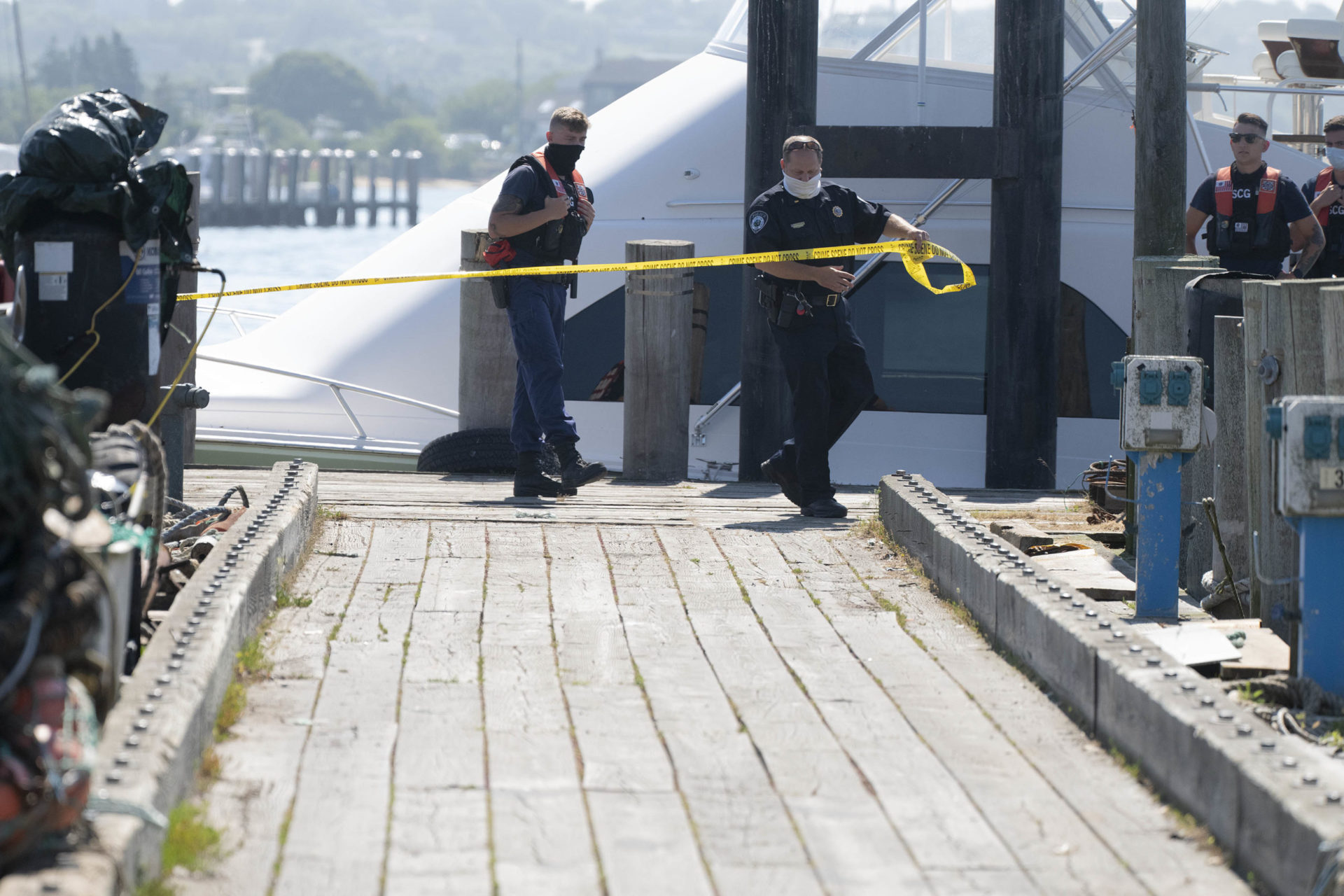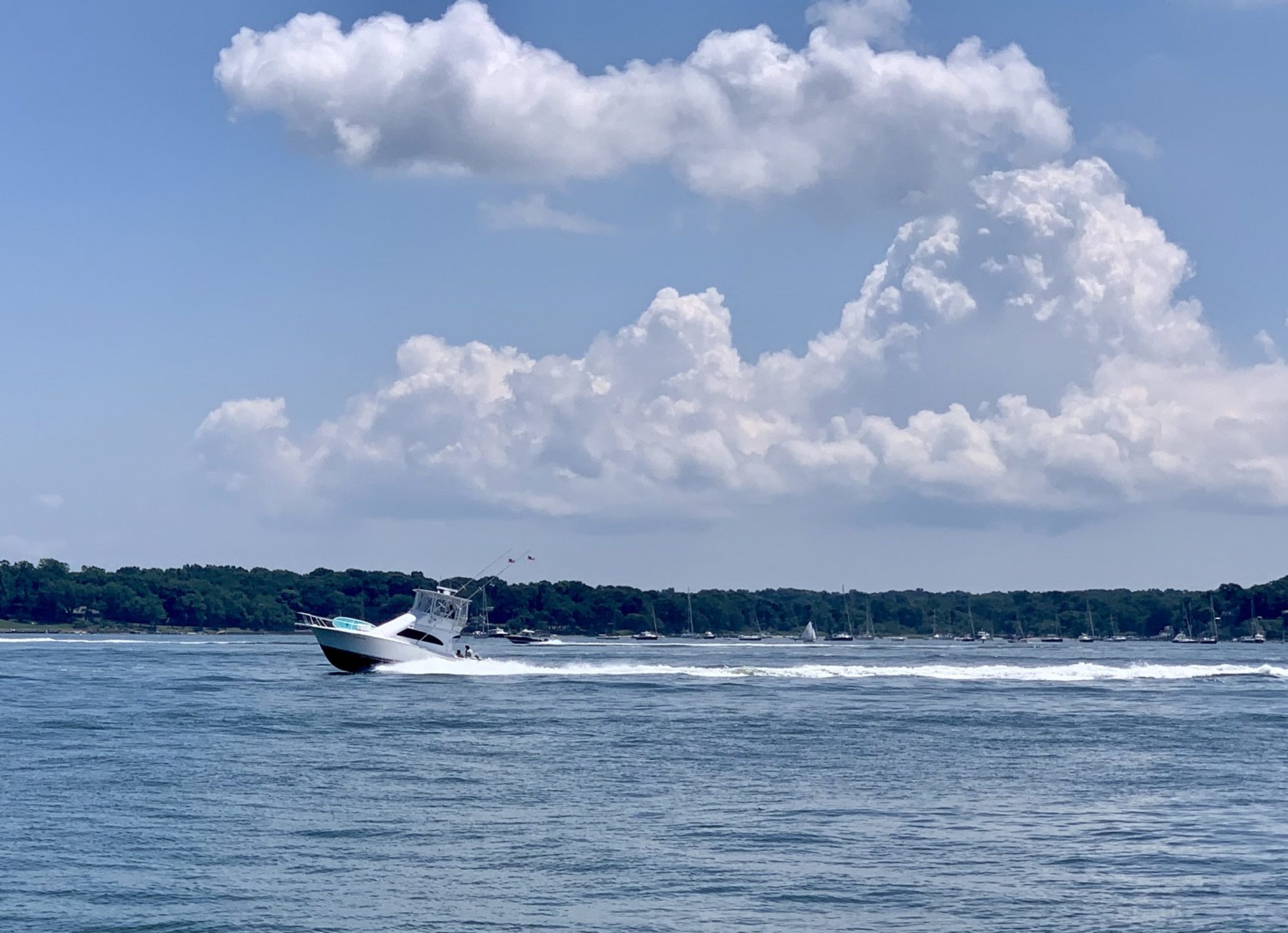Dangers Lurk on East End Waters


A heat wave descended on Long Island. The sun shined bright and the heat index soared. On the East End, many were lured to the glistening water and light breeze that provided some relief from oppressive humidity and temperatures in the 90s. In the midst of COVID-19, outdoors is the safest place to be.
But the calming sound of waves crashing can be disturbed in an instant. And last weekend, the dangers lurking on the water made themselves all too well-known.
In Montauk’s Fort Pond, a large, murky freshwater lake between downtown Montauk and Second House Road, a Brooklyn bar owner lost his life. Jeffrey B. Gantt launched a row boat from a house on Fort Pond with two friends and his girlfriend. They lost an oar, and his two friends jumped into the lake to retrieve it. Gantt soon followed. It wasn’t long before he disappeared under the water.
His girlfriend, who had stayed back on the boat, jumped in after him. With a strong southwest wind that night, the boat quickly drifted away. The two men swam to shore to get a canoe, then paddled out to pick her up, but there was no sign of Gantt. Emergency personnel were unable to find him until Monday evening, when side-scan sonar helped divers locate his body, 30 feet at the bottom of the pond. Gantt was 42.
Detectives are still investigating what caused the drowning, but Detective Sgt. Dan Toia says it appears Gantt may not have known his swimming limitations. “Or maybe he wasn’t aware of the depth of the water or the wind conditions, or he became too tired or whatnot,” Toia says. It is also possible he experienced a medical event. An autopsy will reveal more.
The past weekend was full of close calls on the water, too. A 40-foot commercial fishing vessel sank after it was struck by another boat in dense fog outside of Montauk Inlet last Saturday morning. While dropping their nets, the captain and first mate of the Petrel reportedly saw the boat approaching on their radar. The captain ran from the helm just in the nick of time. Chaos, a 40-foot sport fishing boat, crashed into the pilot house while going a reported 22 knots in zero visibility—that’s about 30 miles per hour on the road. The operator, John R. Eren, 38, of Bethlehem, CT, was cited for negligent operation.
“People always need to be reminded to exercise good judgement and caution on the water,” East Hampton Town Police Chief Michael Sarlo says. “We have miles of unprotected shore line, and with thousands of vessels active, along with paddleboards, kayaks, swimmers and all other types of water passage use, from kite surfers to windsurfers, Jet Skis, etc., the risks of accidents are high, and we have been fortunate here in East Hampton to avoid more frequent tragedies.”

On the North Fork, Southold Town Police Chief Martin Flately agrees. “Summertime on the water is always busy for us with the amount of visitors and summer residents—especially this year—that take to the water,” he says. “Unfortunately, this also brings the inexperienced boaters and swimmers to our waterways which can be problematic,” he adds, citing several recent incidents.
Two men out in a 12-foot boat on the Great Peconic Bay last Sunday were tossed into the water when passing vessels caused a wake that flooded their boat and flipped it. They were able to climb on top of the overturned boat until help arrived. There was also “a near miss” last Saturday when a boater misjudged the entrance to James Creek in Mattituck, the very site of a fatal boat crash in November. “Luckily in this case, the boater was going slow and no one was injured,” the chief says.
Such incidents are not just relegated to boaters. Last Monday afternoon, three people were trapped on the Nassau Point sand bar after they ventured out to the end and the tide came in behind them. A 16-year-old boy was swept away into the bay, but Marine units from Shelter Island and Southold Police Departments were able to save the conscious, albeit exhausted, teen.
John Ryan Jr., chief of the East Hampton Town lifeguards, says the majority of drownings occur with good swimmers. “Sounds ridiculous, but it’s not,” he observes. “One thing that people don’t take into account is Mother Nature and the inability to get where you want to go.”
He points to the recent drowning of the actress Naya Rivera in California’s Lake Piru. “I’m going to say she entered the water and the boat got away from her and she couldn’t get back to the boat,” he says.
There have been a number of rescues on the Atlantic Ocean in both protected and unprotected waters. “Advantage Mother Nature,” Ryan likes to say, explaining that the sandbars are built up creating rip currents. “It doesn’t have to be big surf to be dangerous surf.”
In one instance, three weeks ago, a northeast wind blew two teens in a kayak—with no life vests—from Deerfield Drive in Beach Hampton to Atlantic Avenue in Amagansett. “They were heading for Florida!” Ryan says. “Chances are they would have died. They had not accounted for any of that. Your plan may be Plan A, but Mother Nature has Plan B in store. That’s where people drown. Once people realize they don’t have control…they immediately become a non-swimmer.”
The town’s junior lifeguard program teaches young swimmers “that rip currents are nothing,” he says. It’s when swimmers panic—the building anxiety, the shallow breaths—that drowning occurs.
Chief Flatley’s suggestion to those stepping into the water for any range of activities is “to know and respect the body of water you are planning on spending time on.” He says to check the forecasted weather, wind conditions, tide changes, navigational aids marking sandbars and channels, as well as the equipment on the vessel you may be operating.
“It’s always dangerous on the water if you don’t follow the rules,” says East Hampton’s Chief Harbormaster Ed Michels. “It’s a miracle there aren’t more accidents and that there aren’t more injuries on water and land, because people are just so careless.”
Reports from Nassau County are that the waterways are congested with personal water crafts (PWCs), like Jets Skis, and that they are so popular this summer, there are none available in the state. East Hampton Town banned PWCs on internal waterways years ago. Jet Skis are allowed in the other townships.

Vincent T. Pica II, the district commodore of the U.S. Coast Auxiliary’s First District Southern Region, says it comes down to the fact that boaters need boater safety classes, which for the most part are not mandatory. All Jet Ski operators must take a USCG-approved boating safety class. If you were born after May 1, 1996, you are now required to complete a state approved course and obtain a boating safety certificate to operate any motorboat. For instance, one of the many safety instructions that are taught is proper sound signals in the fog.
He suspects that there’s an increase in accidents and correlates it to the coronavirus pandemic. In-person boater safety classes were canceled and virtual classes were limited, he notes.
The U.S. Coast Guard Auxiliary and the Power Squadron provides a free service to conduct vessel safety checks to ensure private boats have the proper number of items such as life jackets and flares, or safety items like fire extinguishers. The auxiliary’s patrols were also canceled for several months due to the virus and are only just starting to be reconstituted.
“No one can say how the loss of those extra set of eyes that USCG auxiliary patrols and functions effected boater safety—but it certainly didn’t help,” Pica says. While the crews carry no law enforcement authority, they “nonetheless generate better behavior on the part of the recreational boater.”
Traffic on the local waterways may be a little higher than usual, Michels says, but nowhere near what it was 15 years ago, when the economy was better. But visitors just seem intent on whatever activity they’ve planned on the water, he observes. “They say, ‘I’m going fishing next Tuesday, and if next Tuesday isn’t the day to go fishing, I’m still going. I’ve got to because I came here for that.’”



